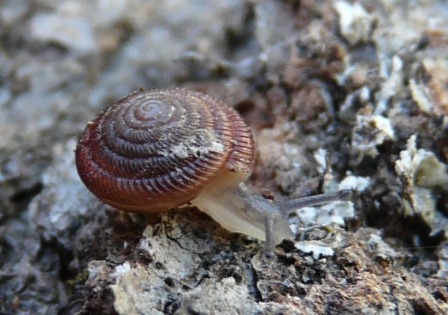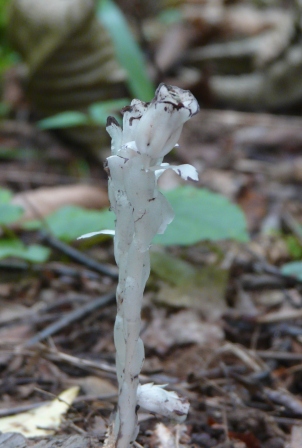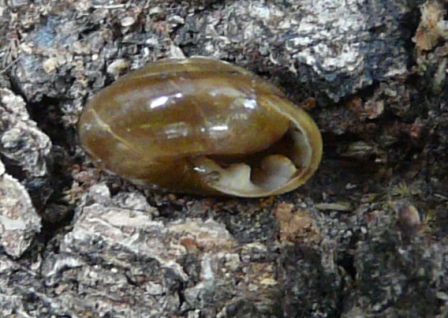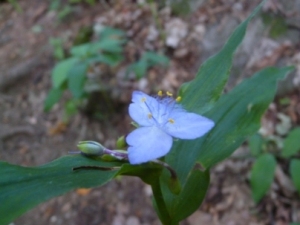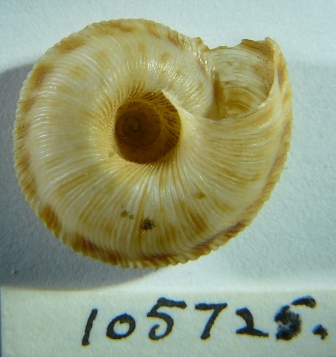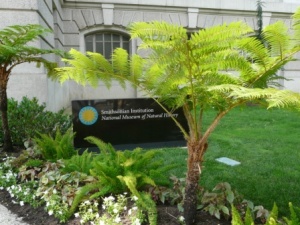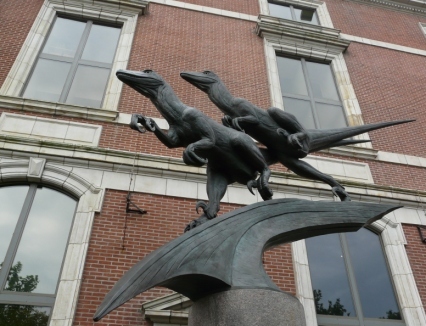Ooo la la, Holotypes galore at the Carnegie Museum in Pittsburgh!

Anguispira picta holotype, Carnegie Museum

Specimen labels from Anguispira picta holotype, Carnegie Museum

Anguispira alabama holotype, Carnegie Museum
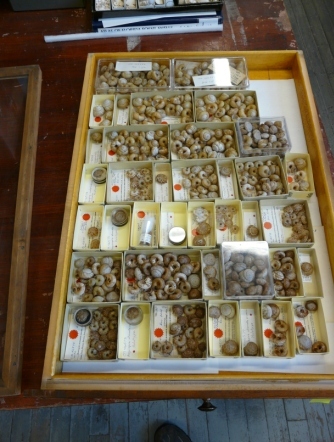
Drawer full of type specimens, Carnegie Museum
These are the original specimens from which the venerable G. H. Clapp described the rare tigersnails (genus Anguispira). These snails live in the rocky limestone outcrops that jut from the low mountain slopes around Sewanee.
After studying these snails for several years it was a treat to see and photograph these beautiful shells. The “holotypes” are the individual specimens to which the name of each species is attached – the throbbing heart of all of biology because without species names, the life sciences could not operate. Yay for taxonomy!
Jia Pan and I have been sequencing the snails’ mitochondrial DNA to peer into their evolutionary history and present-day genetic diversity. Our genetic work suggests that some previously undescribed forms may lurk in the shady mountain coves – we’re now checking to see how the appearance of the shells matches (or not) the genetic information. Thank you to Tim Pearce, Asst. Curator & Head, Section of Mollusks at the Carnegie Museum of Natural History for making my visit such a pleasure.
Surprisingly, the museum chose not to feature Anguispira in their street art:

Diplodocus, Carnegie Museum

Diplodocus nameplate, Carnegie Museum

Triceratops in full breeding colors, Carnegie Museum
 The settling water ruined the invisibility of spider webs. This one hung ten feet above the ground.
The settling water ruined the invisibility of spider webs. This one hung ten feet above the ground.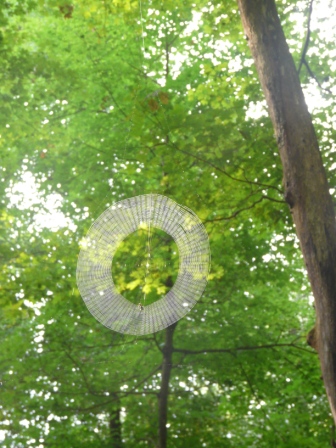 Snails and slugs were active, especially around the bases of dead trees. Probably at least half of the species of land molluscs in this forest dwell in or under dead wood.
Snails and slugs were active, especially around the bases of dead trees. Probably at least half of the species of land molluscs in this forest dwell in or under dead wood.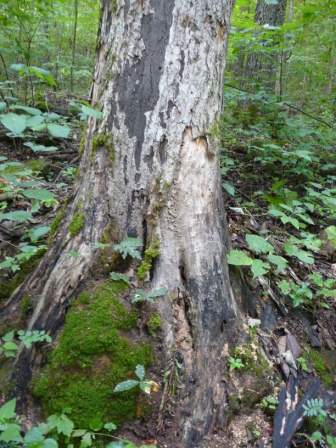 Gastrodonta interna, the “brown bellytooth,” was particularly abundant. The small ribs on its body whorls make the shell looks like a tightly coiled rope. The shell is small, about 7 mm wide, and has about 8 or 9 whorls.
Gastrodonta interna, the “brown bellytooth,” was particularly abundant. The small ribs on its body whorls make the shell looks like a tightly coiled rope. The shell is small, about 7 mm wide, and has about 8 or 9 whorls.